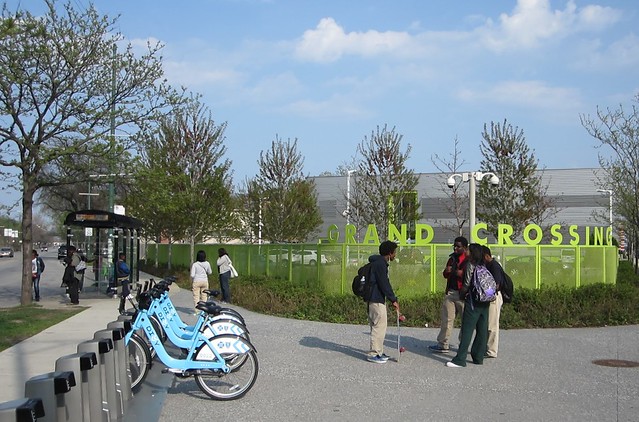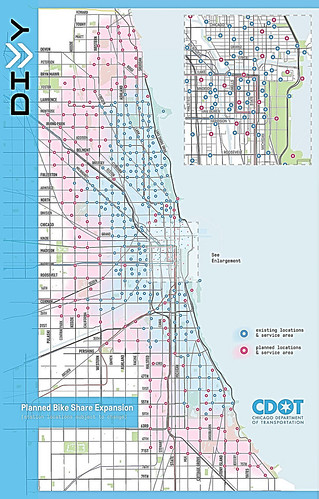
Thanks to member surveys, we’ve known for years that bike-share membership in other cities like Washington, D.C. and Denver has been disproportionately white, male, young, educated, and relatively affluent. Now we have confirmation that the same is true of Divvy’s annual members. However, the Chicago Department of Transportation hopes the Divvy for Everyone (D4E) equity program will increase access and help broaden its appeal, so that ridership better reflects the city’s demographics.
At a Mayor’s Bicycle Advisory Council meeting Thursday, CDOT officials announced some of the findings of a Divvy survey conducted earlier this year. The system currently has about 30,000 annual members.
Of the hundreds of members who responded to the questionnaire, 65 percent were male, and 79 percent were non-Hispanic whites – a group that makes up only about 32 percent of the city’s population. The average age was 34, the majority of respondents had middle-to-upper incomes, and 93 percent have a college degree or more.
Why does this matter? Divvy is a public transportation system, whose infrastructure is subsidized by taxpayer money. “Bike-share is a public amenity, so it should be accessible not just to those who have the means, but also those who might not have the means,” noted Go Bronzeville’s Ronnie Harris at the D4E launch last July. Moreover, low-to-moderate-income neighborhoods and communities of color stand to gain the most from the mobility, economic, and health benefits of bicycling.
One reason the Divvy membership doesn’t look like Chicago yet is station placement. When the system debuted in 2013, the first 300 docking stations were concentrated in parts of the city with a high density of people and destinations, in an effort to make sure the system was financially sustainable. However, this meant the lion’s share were installed downtown and in North Lakefront neighborhoods.
This year’s addition of 175 stations brought bike-share to many new neighborhoods, including a number of LMI African-American and Latino communities, but the density of stations still tends to be higher in more affluent areas of the city, downtown and on the North Side. However, more West Side neighborhoods are slated to get stations next year.
Furthermore, while the $75 membership fee is a bargain at about $0.20 a day, it remains a barrier to many low-income Chicagoans, as does the credit card requirement. That’s where the equity program comes in, CDOT staffer Amanda Woodall explained at the meeting. “We wanted to be able to increase the diversity of people who are using the system and make it more accessible to more people.”
In a nutshell, D4E offers $5 annual memberships to Chicago residents with a maximum combined household income of 300 percent of the federal poverty level, and the credit card rule is waived. The initiative is made possible by a $75,000 grant to the city of Chicago from the Better Bike Share Partnership, plus matching funds from Divvy sponsor Blue Cross Blue Shield of Illinois. Read more about how the program works here.
To spread the word about D4E, CDOT has contracted Slow Roll Chicago to do citywide outreach, and has hired Go Bronzeville to promote the program in that largely African-American, Near South neighborhood. Although that community has good Divvy coverage, its zip code contains only 45 members, compared to 250 in the next zip code to the south, and 780 in the next one to the north, Woodall said.
Bronzeville has a significantly higher percentage of low-income and unbanked households than the city average, Woodall added. “It was clear that there was a need there, so we wanted to do a deep dive and see what works and what doesn’t,” she said. “We’ll apply what we learn on a citywide basis.”
The city’s goal was to sign up 800 people for D4E in the first 12 months, and 869 had joined as of Wednesday, so the discounted memberships have been a huge hit so far. As of August 25, about 760 people had joined, and 500 of them had used the system, Woodall said. “The top rider had taken 162 trips, so some people are really, really using this.”




